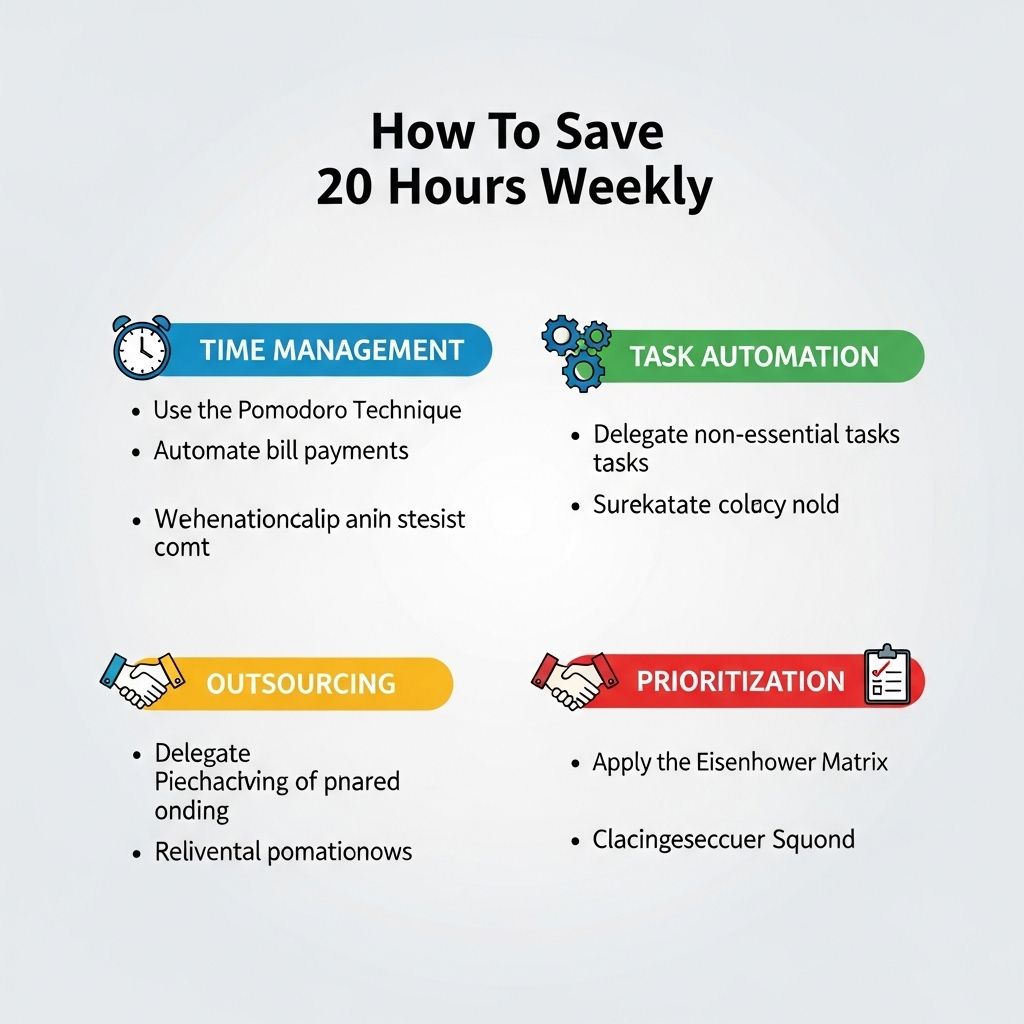In today’s fast-paced digital world, time has become one of our most valuable resources. Between work, family commitments, and leisure activities, finding the time to get everything done can be a challenge. However, with the right strategies and tools, it’s possible to save significant hours each week. This article explores actionable steps that can help you reclaim 20 hours of your week, allowing more time for what truly matters.
Table of Contents
Understanding Time Management
Time management is not just about squeezing more tasks into your day; it’s about recognizing what’s essential and prioritizing effectively. Here are a few key principles of time management:
- Prioritization: Focus on tasks that yield the highest value.
- Delegation: Distribute tasks that others can do, freeing up your time.
- Minimizing Distractions: Identify and eliminate distractions that sap your focus.
Assessing Your Current Schedule
Before making changes, it’s essential to understand how you currently spend your time. Consider keeping a time log for a week to identify where your hours are going. This log should detail:
- Work tasks
- Meetings
- Commute time
- Family and personal commitments
- Leisure activities
Once you’ve established a baseline, categorize your activities into the following:
- Essential Tasks: Tasks that must be completed.
- Important Tasks: Tasks that add value but aren’t urgent.
- Non-Essential Tasks: Activities that can be eliminated or delegated.
Implementing Productivity Techniques
Next, adopt productivity techniques that align with your work style. Here are some proven methods:
The Pomodoro Technique
This time management method encourages working in short, focused bursts followed by brief breaks. The cycle typically consists of 25 minutes of focused work followed by a 5-minute break. After four cycles, take a longer break of 15-30 minutes.
Time Blocking
Time blocking involves scheduling specific blocks of time for different tasks or projects. This method allows for deep work without interruptions and helps to structure your day efficiently.
The Eisenhower Matrix
Use this tool to categorize tasks based on urgency and importance. The matrix divides tasks into four quadrants:
| Quadrant | Tasks |
|---|---|
| 1 | Important and Urgent |
| 2 | Important but Not Urgent |
| 3 | Not Important but Urgent |
| 4 | Not Important and Not Urgent |
Leveraging Technology
Incorporating technology into your efficiency strategies can drastically cut down on time wastage. Consider the following tools:
- Task Management Software: Tools like Trello, Asana, or Todoist help organize tasks and track progress.
- Automation Tools: Use tools like Zapier or IFTTT to automate repetitive tasks such as email sorting or social media posting.
- Calendar Apps: Google Calendar or Outlook can help manage appointments effectively, ensuring that you allocate time for both work and personal commitments.
Streamlining Communication
Effective communication is vital in both personal and professional contexts. Here are some strategies to optimize your communication:
Use Direct Communication Channels
Opt for direct forms of communication such as video calls or face-to-face meetings when discussing complex ideas rather than lengthy email threads.
Set Clear Expectations
When delegating tasks or collaborating on projects, ensure that expectations are clearly defined. This can prevent misunderstandings and reduce the back-and-forth communication that can waste time.
Batching Similar Tasks
Batching involves grouping similar tasks together to complete them more efficiently. Here’s how to do it:
- Identify tasks that require similar resources or mental bandwidth.
- Allocate specific times in your schedule to complete these tasks.
- Turn off notifications and minimize distractions during these batches.
Establishing Boundaries
Establishing boundaries is crucial to maintaining your productivity. Consider these tips:
- Learn to Say No: Politely decline tasks or commitments that do not align with your priorities.
- Set Work Hours: Define when you are available for work and when you are not, allowing for dedicated personal time.
- Use Do Not Disturb Features: Use your devices’ settings to limit interruptions during focus periods.
Reviewing and Adjusting Regularly
Finally, saving time is an ongoing process that requires regular review and adjustment. Set aside time weekly to:
- Assess what strategies are working and which need to be changed.
- Re-evaluate your priorities and adjust your goals if necessary.
- Stay flexible and open to new techniques and tools that may emerge.
Conclusion
By implementing these strategies, saving 20 hours a week is not only possible, but it can also lead to significant improvements in your work-life balance. With careful planning, effective time management techniques, and the right tools, you can reclaim precious hours and enjoy more time for yourself and your loved ones. Start taking actionable steps today, and watch how your productivity soars!
FAQ
What are effective strategies to save 20 hours weekly?
To save 20 hours weekly, prioritize tasks, set specific goals, eliminate distractions, delegate responsibilities, and utilize productivity tools.
Can time-blocking help in saving 20 hours a week?
Yes, time-blocking can significantly improve your efficiency by allocating specific time slots for tasks, helping you focus and reduce wasted time.
How does setting boundaries contribute to saving time?
Setting boundaries helps you say no to non-essential tasks and commitments, allowing you to focus on what truly matters and save valuable time.
What role does automation play in saving time?
Automation can streamline repetitive tasks, reducing manual effort and freeing up hours in your week for more important activities.
Is it possible to save 20 hours a week while maintaining work-life balance?
Absolutely! By optimizing your time management and focusing on high-priority tasks, you can save hours while still enjoying personal and family time.
What tools can help me save 20 hours weekly?
Tools like project management software, calendar apps, and task automation platforms can help you organize your time better and save hours each week.








